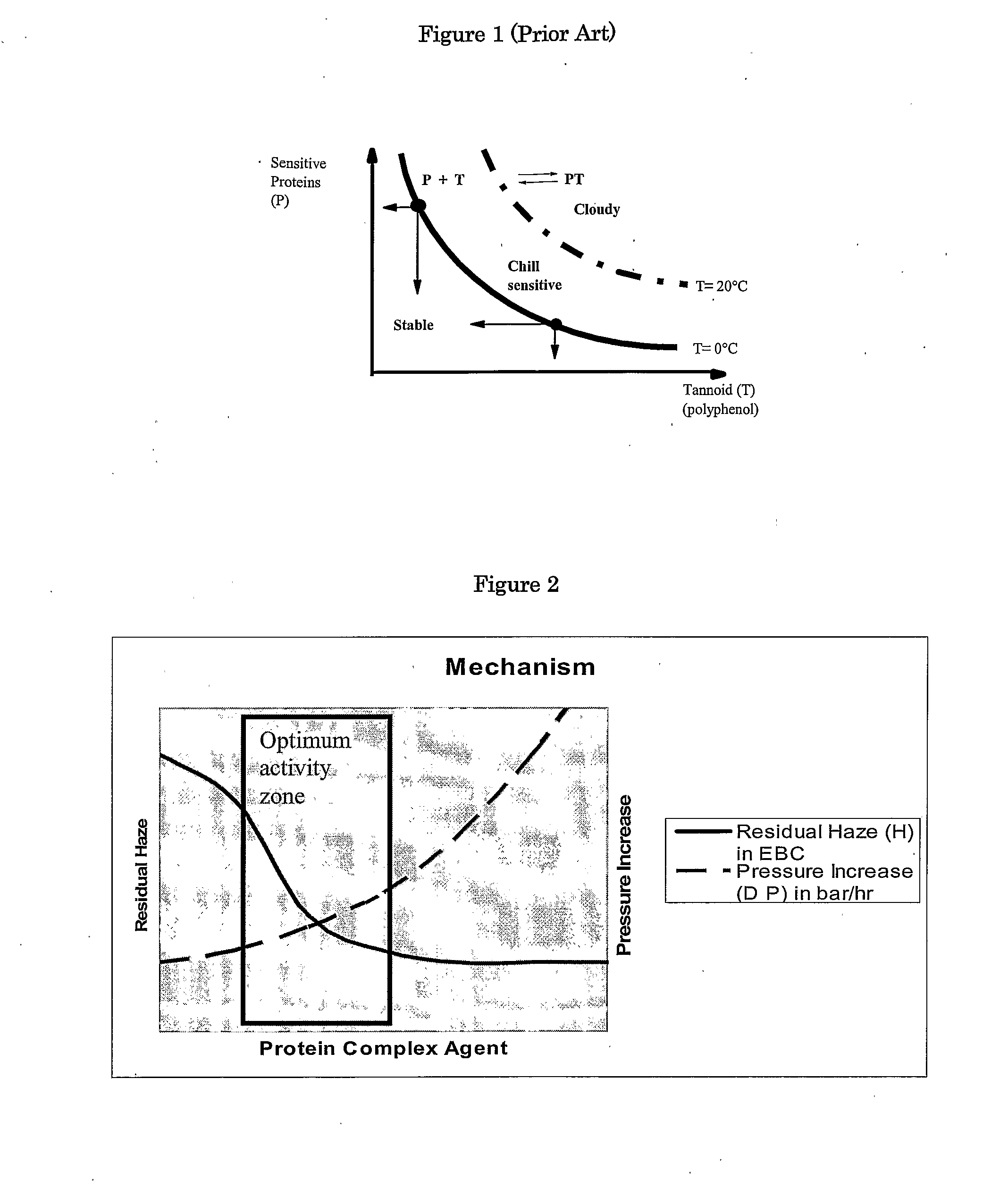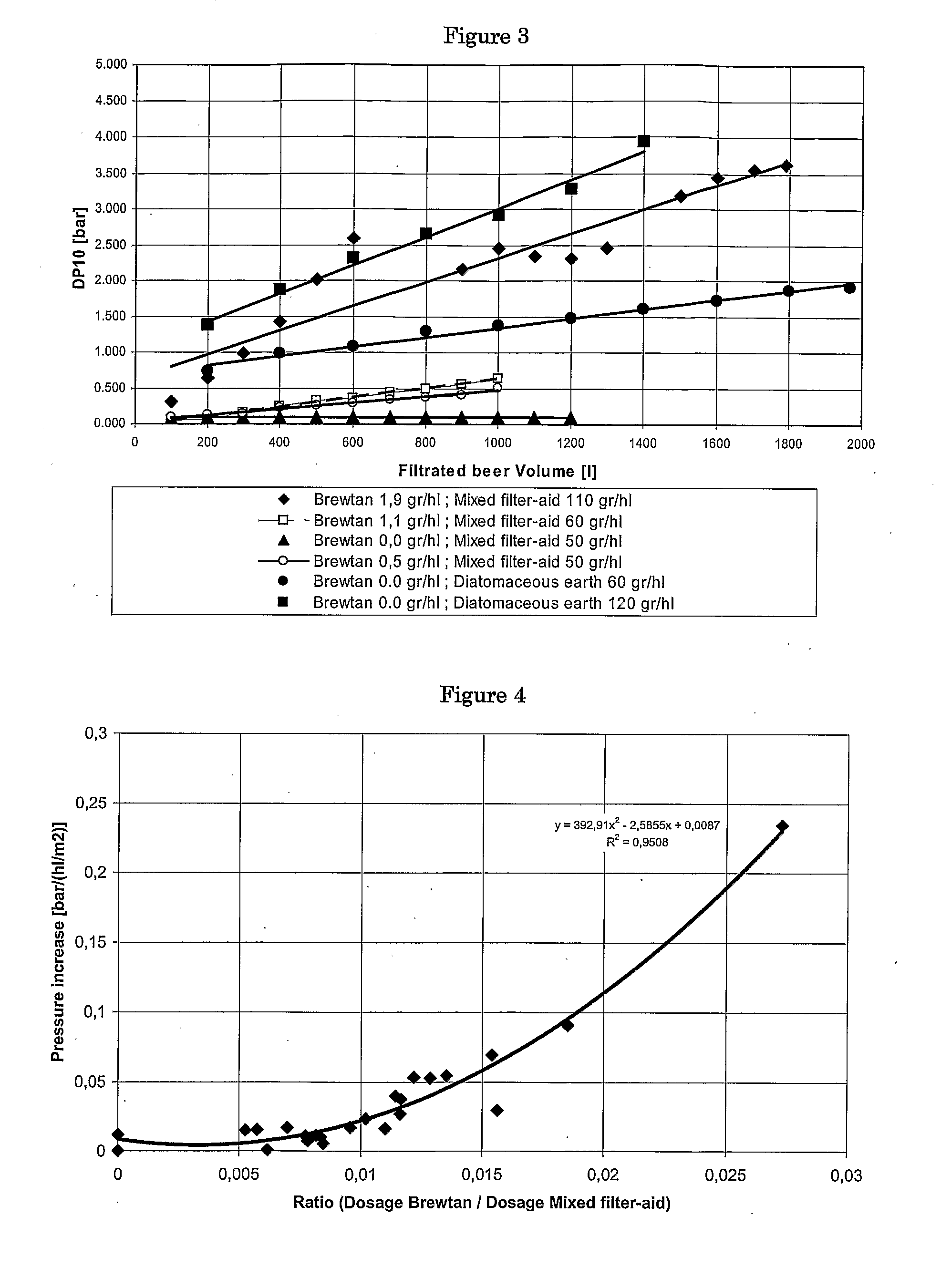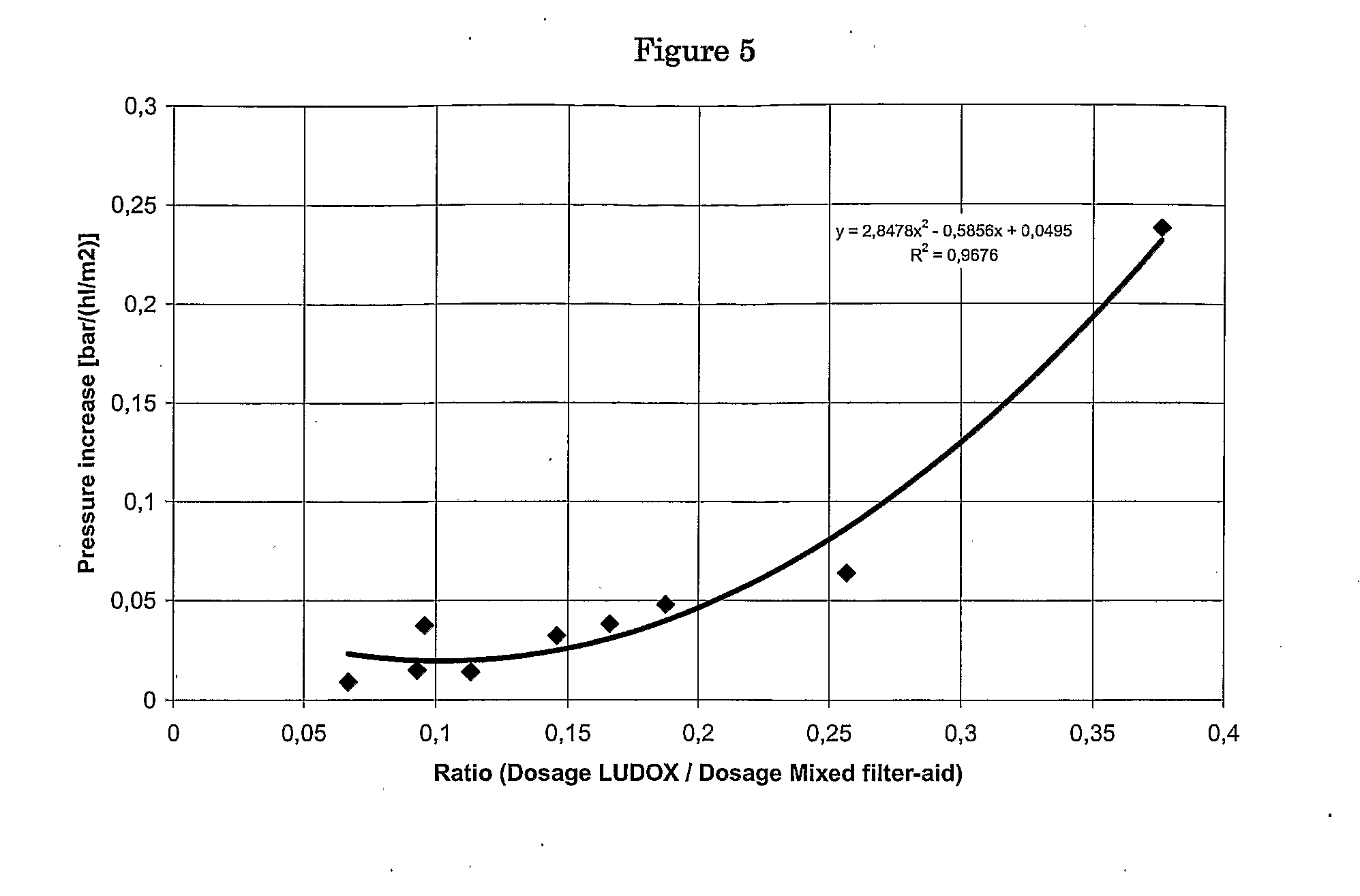Method of Preparing a Liquid, Containing Proteins for Subsequent Separation, by Using One or More Protein-Complexing Agents
a protein and complex technology, applied in the field of liquid preparation, can solve the problems of poor beer hygiene, negative consequences on beer colloidal stability, wheat based adjuncts on the other hand, and increase the risk of haze formation, so as to achieve positive impact on colloidal stability
- Summary
- Abstract
- Description
- Claims
- Application Information
AI Technical Summary
Benefits of technology
Problems solved by technology
Method used
Image
Examples
examples
[0145]Some pilot trials were carried out in a pilot facility, where centrifuged industrial beer was filtered.[0146]A filtration run of 20 hi was carried out, the type and the size of the filter is a candle filter of 0.54 m2 and the rate of the filtration is around 11 hl / hr.m2.[0147]Prior to the filtration step the industrial centrifuged beer was treated with different dosage of gallotannins (Brewtan® from Omnichem): quantity comprising between 0.5 and 2.0 g / hl. The injection of the gallotannins was done in-line continuously, directly before the filtration of the beer, by using an appropriate dosing pump. It is also possible to dose the complexing agent by treating the batch of beer: i.e. into the tank of unfiltered beer.[0148]In another experiment, the beer was treated prior to the filtration with a solution of colloidal silica instead of gallotannins. The tested silica sol (Stabisol 3000 from Stabifix or LUDOX® from GRACE Davison) had a concentration of about 30-31%, a density at 2...
PUM
| Property | Measurement | Unit |
|---|---|---|
| temperature | aaaaa | aaaaa |
| size | aaaaa | aaaaa |
| pH | aaaaa | aaaaa |
Abstract
Description
Claims
Application Information
 Login to View More
Login to View More - R&D
- Intellectual Property
- Life Sciences
- Materials
- Tech Scout
- Unparalleled Data Quality
- Higher Quality Content
- 60% Fewer Hallucinations
Browse by: Latest US Patents, China's latest patents, Technical Efficacy Thesaurus, Application Domain, Technology Topic, Popular Technical Reports.
© 2025 PatSnap. All rights reserved.Legal|Privacy policy|Modern Slavery Act Transparency Statement|Sitemap|About US| Contact US: help@patsnap.com



